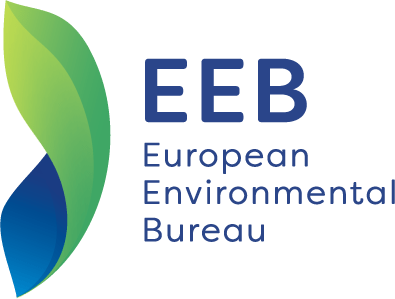‘Flood’ of toxic Chinese toys threatens children’s health
Phthalates found in children at harmful levels in 13 out of 15 EU countries
Brussels, 28 November 2019 – Government officials are facing a ‘flood’ of dangerously contaminated Chinese toys, figures crunched by the European Environmental Bureau (EEB) revealed today.
National officials blocked 248 models of toy (likely tens of millions of units) from sale so far in 2019 after tests revealed illegal levels of toxic chemicals. Of these, 228 (92%) were categorised as “serious risk”; 219 (88%) came from China; and 127 (51%) were contaminated with phthalates, a plastic additive. One product contained 43% phthalate by weight – a halloween mask found in Germany. Two seriously contaminated toys found in Poland were plastic medical play sets, another was a toy chemistry set found in France.
 Around half the contaminated toys were plastic (121), 73 were dolls, 62 were slime contaminated with boron, 27 were soft or squeezable toys. After chemical risk, toys were blocked because of risk of choking (192) and “environment” (51). Toys were the single most problematic good blocked (542), followed by motor vehicles (462) and electrical appliances (162), though inspections are usually not random. The findings come from the EU Rapex system, which alerts officials across Europe about dangerous consumer goods.
Around half the contaminated toys were plastic (121), 73 were dolls, 62 were slime contaminated with boron, 27 were soft or squeezable toys. After chemical risk, toys were blocked because of risk of choking (192) and “environment” (51). Toys were the single most problematic good blocked (542), followed by motor vehicles (462) and electrical appliances (162), though inspections are usually not random. The findings come from the EU Rapex system, which alerts officials across Europe about dangerous consumer goods.
Customs officers from four EU frontier countries checked 2.26 million Chinese plastic toys, blocked 722,598 from entering Europe after discovering illegal levels of phthalates and destroyed 31,590, according to a single joint enforcement project presentation last winter. Of the contaminated toys, 92% carried the manufacturer’s CE safety mark. 21 Rapex alerts were created as a result.
Consumer groups yesterday released a round-up of toys tested for toxic chemicals by their members.
Large-scale screening for chemical pollution found that four phthalates pose a risk to children in 13 out of 15 EU countries. All children were contaminated with phthalates, on average twice as much as their mothers. Sometimes contamination was much higher, up to 12 times more than their mothers. Possible health impacts include reproductive disorders, delayed puberty and numerous behavioural disorders. The European Chemicals Agency concluded that the situation is not adequately controlled.
The EU Toy Safety Directive rules out production involving many harmful chemicals, but neglects others. Restricted substances are also sometimes found in toys because recyclers can legally trade in plastic containing higher concentrations than virgin material. There is evidence that some recyclers also sell plastic for toys containing banned substances. Some manufacturers break the law by selling toys with legal substances at illegal concentrations. Industry must supply safety data for most chemicals before they are used, while all plastics are exempted from this legal requirement. Manufacturers are not required to label toy ingredients.
The European Environmental Bureau is the bloc’s largest network of green NGOs. Today it launched a public awareness campaign to highlight toxic toys and the need for labelling.
EEB chemical policy manager Tatiana Santos said: “Toxic toys are clearly a major problem for officials. The numbers are appalling; this is a flood. Where inspectors get the resources they need, they do a great job. But we wonder how many go undetected.
“Whether legal or not, toxic chemicals have no place in toys. Children are particularly vulnerable, yet scientists are reporting worrying levels of synthetic substances in the population. The toy industry must wake up to its duty of care and detox quickly. Clearly, importers of Chinese goods have to do a much better job of pressuring their suppliers. Yet some harmful chemicals are still legal in toys. So we need tougher laws too.
“The most problematic toys are those made of plastic. Yet plastics get away with very light touch regulation in Europe. It’s a particular problem in recycled plastic, where we still see chemicals that were banned years ago turning up in new toys. The EU should get tough; ban all toxic chemicals and close the loopholes. Also, any toys allowed into toy shops should carry a label with the chemical ingredients and warning signs if needed, like those that exist for bleach or similar products. This way, parents could see what chemicals are in the toys they buy for their children and make informed choices.”
Chemical pollution is linked to rising health, fertility, developmental and environmental problems, including the collapse in insect, bird and aquatic mammal populations. Two thirds of Europeans worry about daily chemical exposure.
Earlier this month, NGOs warned that EU chemical safety laws are failing and should be improved.
A CHEM Trust survey of UK enforcement authorities found that budget cuts had reduced the number of enforcement officers by half.
Photo by Jason Leung. The toys in this image and video are unrelated to the text on this page and used for illustrative purposes only.

